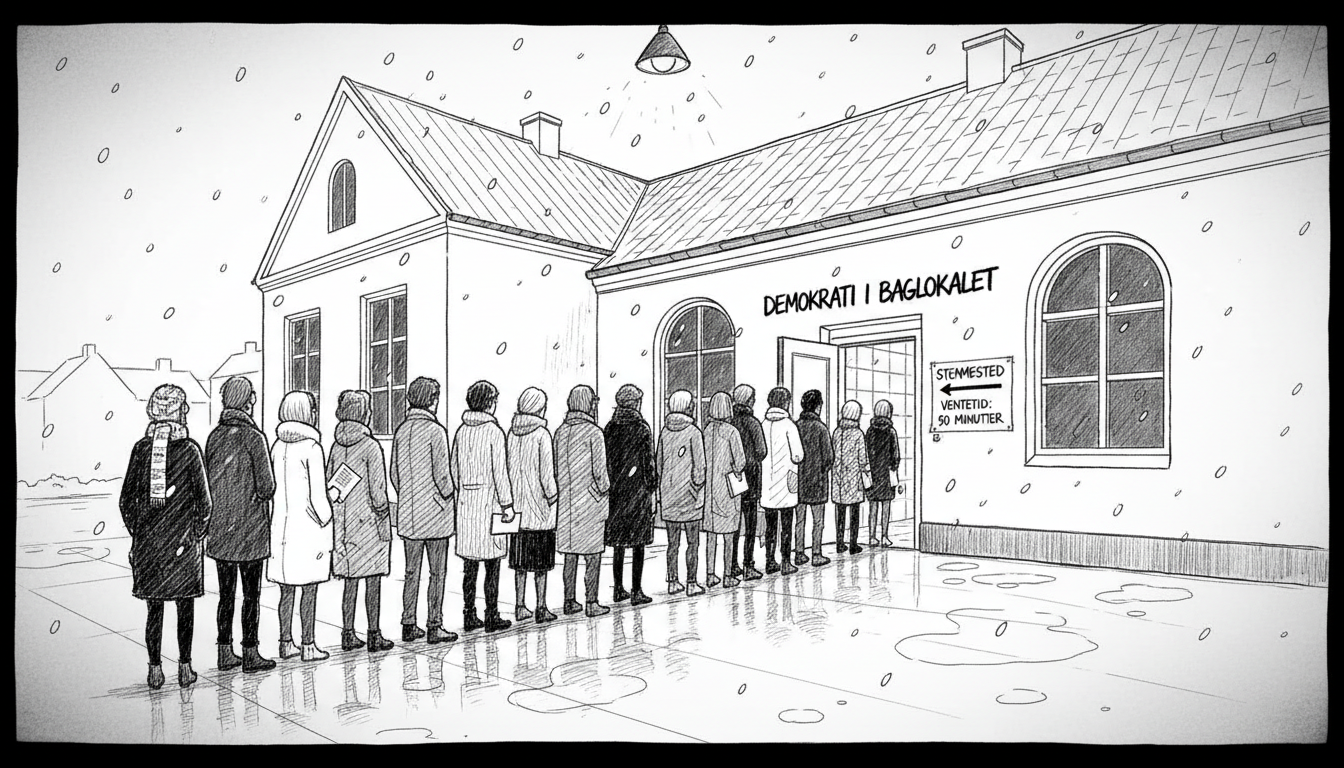Danish voters faced extraordinary waiting times during municipal elections in Copenhagen, Odense, and Aarhus. Election officials reported the longest queues witnessed in 16 years as citizens waited hours to cast their ballots.
In Copenhagen's Nørrebro district, lines stretched around corners and down streets. Voters gathered outside Frederiksgård School polling station, with many joining the queue since 7:30 PM. The situation became so severe that election authorities opened additional voting spaces in bathrooms and toilet facilities to accommodate the unprecedented turnout.
One voter named Peter Rytter described the challenging conditions. "People have stood here for an hour to an hour and a half, and it's really tough," he explained. "I had to go home at one point because I couldn't hold it in, so now I have to queue again." Despite the inconvenience, Rytter emphasized that voting remained critically important to him.
The chief of Copenhagen's election secretariat identified multiple factors contributing to the congestion. While specific reasons weren't detailed, election officials acknowledged the unusual situation required immediate adaptation of polling facilities.
This election congestion highlights several aspects of Denmark's political culture. Danish citizens typically demonstrate high voter turnout compared to many other democracies. The willingness to wait hours in line, even requiring temporary bathroom breaks, shows remarkable commitment to democratic participation.
The situation raises questions about polling station capacity planning. Municipal elections typically draw substantial participation across Denmark, but current arrangements apparently struggled to handle the volume. Election officials now face pressure to examine whether this represents a new normal requiring permanent infrastructure changes.
International observers might find the bathroom voting solution particularly notable. While unconventional, it demonstrates practical problem-solving to ensure no voter gets turned away. The approach reflects Denmark's reputation for pragmatic solutions to unexpected challenges.
For expatriates and international residents in Denmark, this event illustrates the intensity of local political engagement. The queues signal healthy democratic participation, even when logistical challenges emerge. The situation also shows that Danish authorities prioritize voting access over perfect conditions.
What happens next remains unclear. Election officials will likely review today's events and consider adjustments for future elections. The bathroom voting solution may become part of Danish election folklore, but the underlying capacity issues demand serious attention before the next electoral test.

